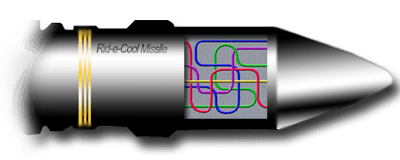The History of DGSE

DGSE was formed on 2 April, 1982. DGSE replaced the Service de Documentation Extérieure et de Contre-Espionnage (SDECE) which had gone through many changes of name and function after the Second World War. Pierre Marion was its first director.
In 1942 the free French forces formed Central Bureau of Information and Action (BCRA). BCRA was renamed General Directorate of Special Services (DGSS) in 1943 and relocated to Algiers. All intelligence networks of the French resistance were incorporated into DGSS, which was renamed Directorate of Studies and Research(DGER) on 6th November, 1944. The External Documentation and Counterespionage Service (SDECE) replaced DGER in 1946 to remove communist elements from the organization. SDECE was directly controlled by the Prime Minister.
The SDECE used opium trade to fund its covert operations in Vietnam during the 50s. Michel Debre the prime minister of France started using SDECE as a strategic intelligence agency by 1962. The agency was used effectively during rebellion in Algeria. The Ben Barka affair of 1962 forced General De Gaulle to bring SDECE under the control of the defense minister. This decision transformed the agency into a predominantly military agency. De Gaulle used SDECE to foment separatist movements in Quebec by sending agents in Canada. This operation was named operation Ascot. SDECE tried to dominate the oil-rich Biafra region of Nigeria, under US and British control, by arming separatists group. This ended in failure and almost 500,000 people lost there lives.
In October, 1973 the SDECE successfully predicted the Yom Kippur War. The agency also correctly predicted soviet intentions before its 1979 invasion of Afghanistan. In September, 1979 the agency started operation Barracuda. This successful operation resulted in the overthrow of Central African Republics Emperor Jean-Bédel Bokassa. A pro French government was installed in Bokassas place.
The agency also tried to depose Colonel Kadhafi of Libya in 1977 by using Libyan troops. This operation was tried again in 1980.
The French socialist and communist parties wanted to change SDECE into a civilian organization with more government control. In June, 1981 the former Director of the Paris Airport, Pierre Marion, was made Director of the agency. He met internal resistance from the mainly military establishment.
Directorate of the External Security (DGSE) replaced SDECE on 4th April 1982. Under his supervision DGSE was centralized. This was done by forming a General Directorate. The General Directorate controlled Counterespionage directorate, Personnel directorate, Searches directorate along with the Division Action. It was during this time that DGSE was prohibited from operating inside French boundaries.
In the early 80s, DGSE collaborated with the Direction de la Surveillance du Territoire (DST) to exploit the source Farewell. This effort uncovered the most extensive technological spy network in Europe and America. The soviets had been using this system to collect important western technical information. Western intelligence agencies were unaware of the program which allowed the Russians to steal classified scientific knowledge from these countries.
The agencys unsuccessful campaign against terrorism and the Pierre Marions controversial personality resulted in Admiral Lacoste becoming Director of DGSE in 1982. The Socialist party goal of making DGSE a civilian organization was fulfilled during the short reign of Pierre Marion. The Demilitarization process of DGSE, started by Marion, continued and by 1989, 45 percent of the organization was civilian. The top DGSE military management was also replaced by civilians. In 1993 the proportion of civilians in DGSE had risen to sixty percent.
One of the agencys more infamous missions was the Operation Satanic. In the summer of 1985 France started testing nuclear weapons in the Pacific Ocean. The purpose of operation satanic was to prevent protests by Greenpeace against these tests. On 10th July 1985, two DGSE agents blew up the Greenpeace ship Rainbow Warrior near Auckland, New Zealand. One journalist drowned during the sinking.
This plot was uncovered by the New Zealand police and both agents pleaded guilty to manslaughter and arson charge. This event severely strained Diplomatic ties between France and New Zealand.
DGSE successfully used the Nicobar network to acquire knowledge of Soviet T-72 tanks and their armor type. Information acquired from this project also made possible the sale of 43 Mirage 2000 fighter jets to India by French government. On June 12, 2005 a French journalist Florence Aubenas was kidnapped by armed gunmen in Iraq. The agency was successful in acquiring the release of Florence, who was held hostage for five months.
Go from History of DGSE to Secret Services
Go to Top Spy Secrets Homepage











New! Comments
Savvy spies can comment here... Just leave me a comment in the box below.